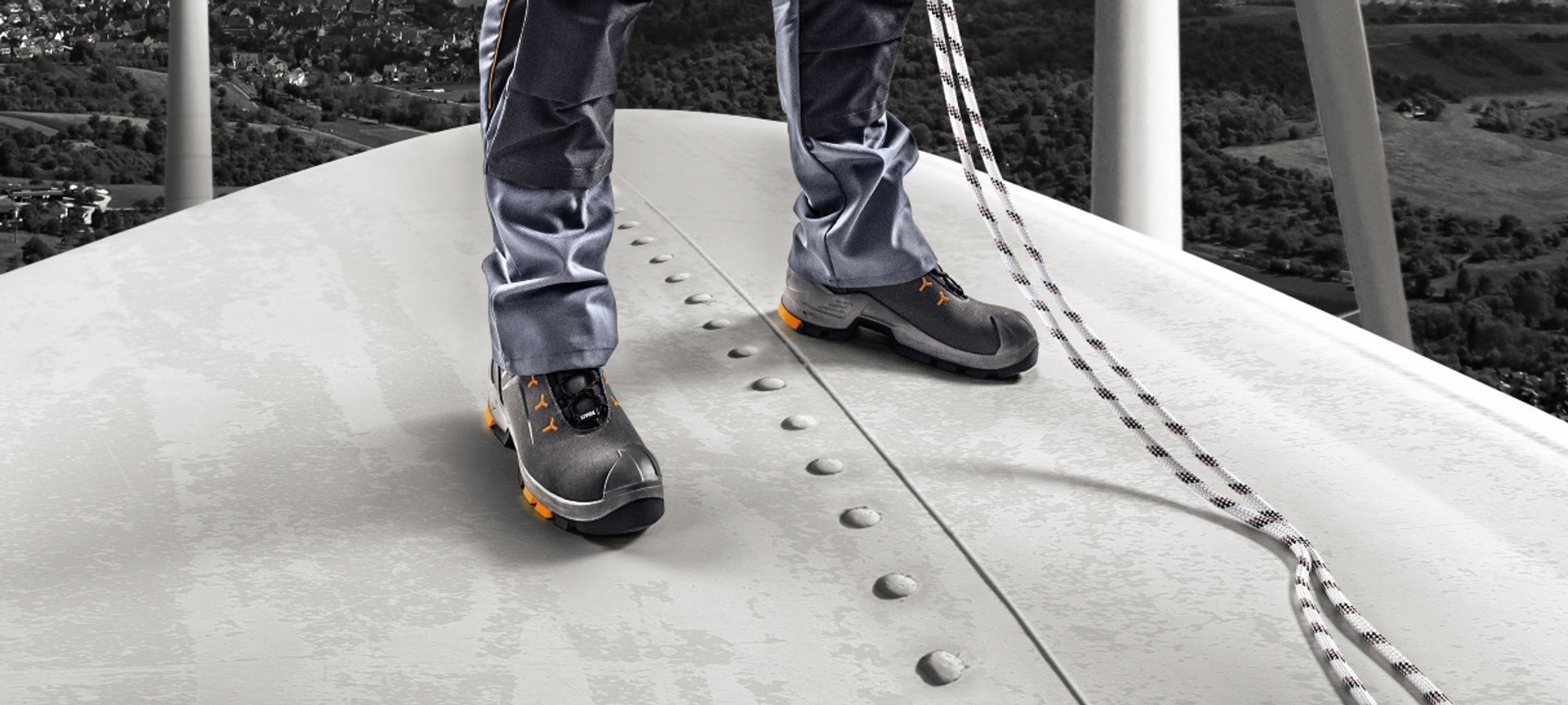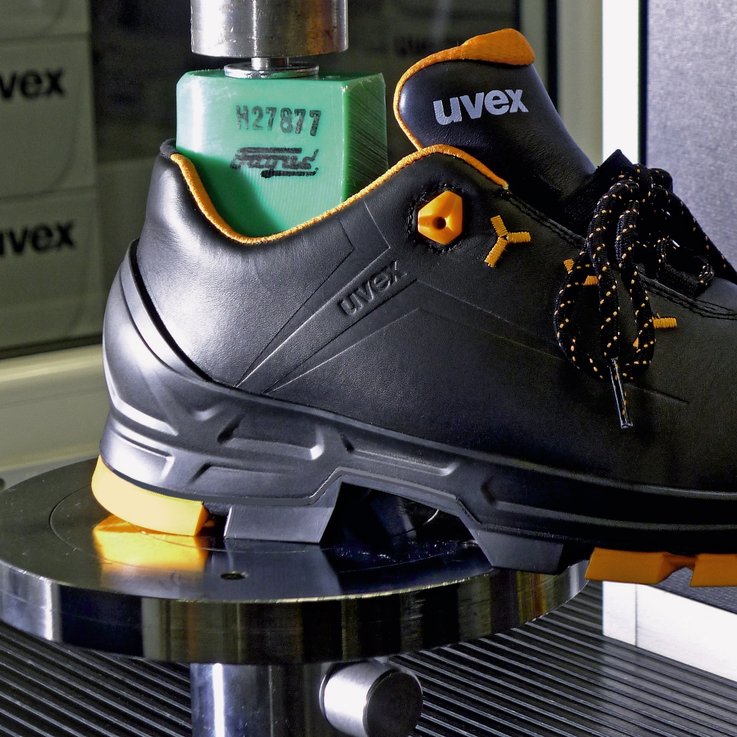The standard EN ISO 20345 defines both the basic and additional requirements for safety shoes for commercial use. Footwear in accordance with EN ISO 20345 is intended to protect the wearer from bumps, crushing, falling or rolling objects, from walking into sharp or pointed objects, heat or cold, and hot substances.
Examples of aspects dealt with in the standard are handling mechanical risks, slip resistance, thermal risks and ergonomic properties. Additional standards relating to individual activities deal with risks in relation to footwear with electrical insulation, for example, and shoes to protect against chemicals, etc.
The basic requirements described in EN ISO 20345 include:
- height of the upper
- heel area on boots
- minimum length, pressure and bump impact resistance of the toe cap
- water vapour permeability and water vapour number of the upper
- outsole thickness and abrasion resistance of the outsole
Safety footwear is divided into different protection classes depending on the requirements fulfilled. The safety footwear in protection class SB fulfil the minimum requirements in accordance with EN ISO 20345. Safety footwear with additional requirements are divided into protection classes S1 to S5 depending in the properties


